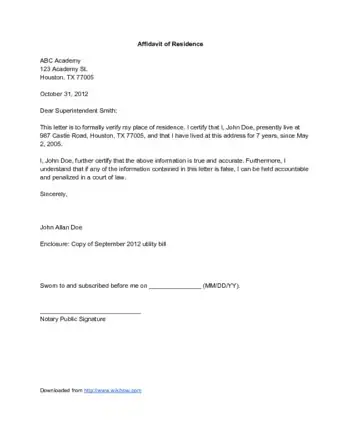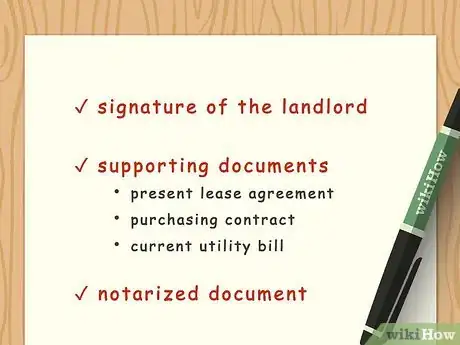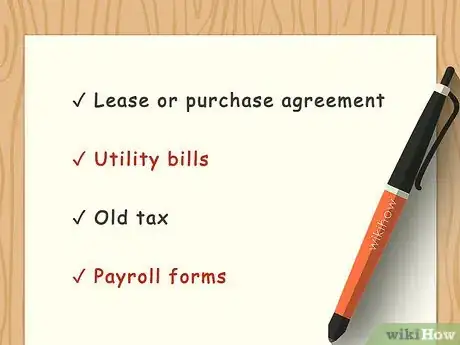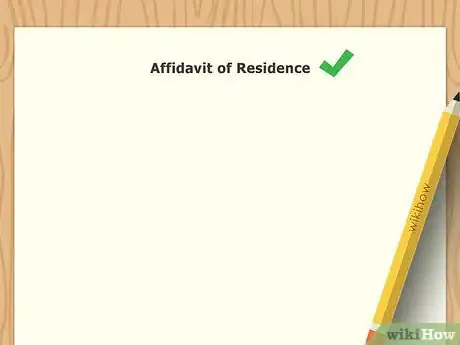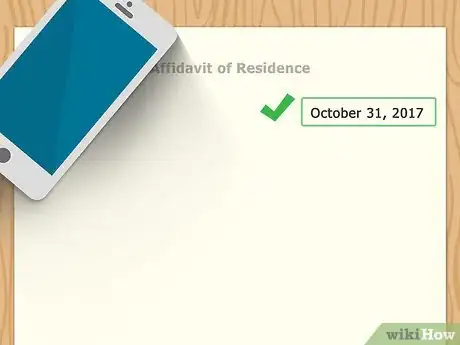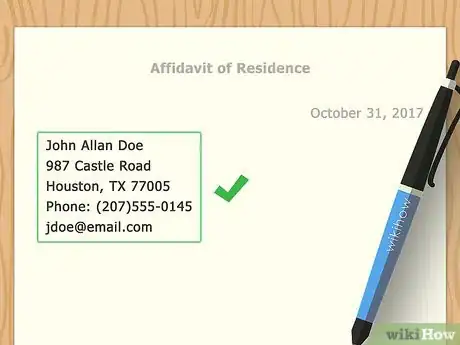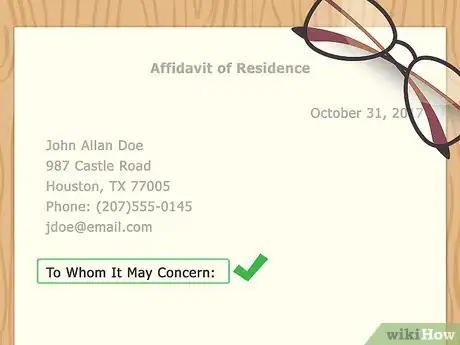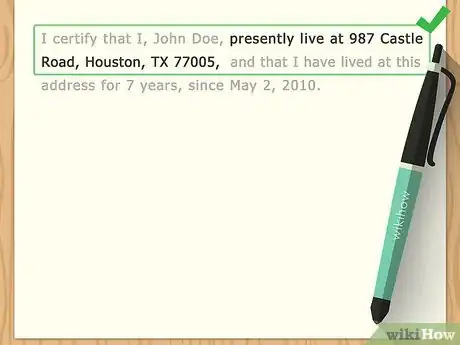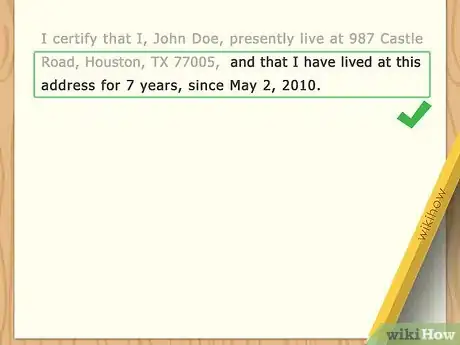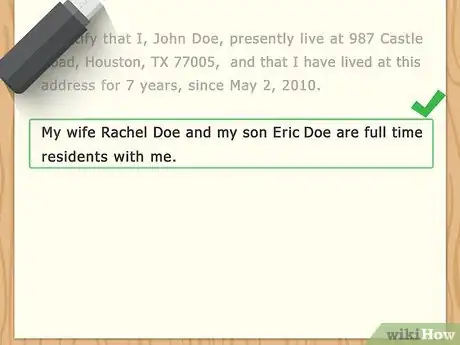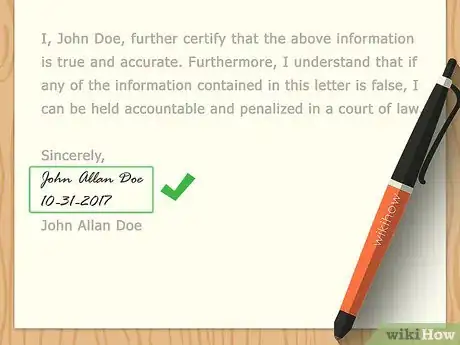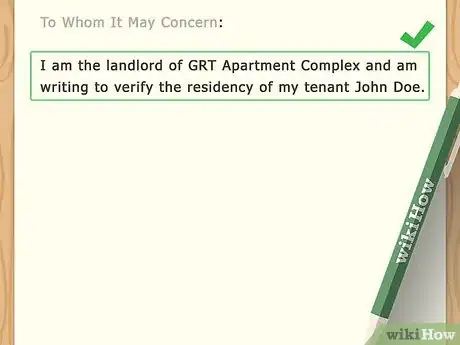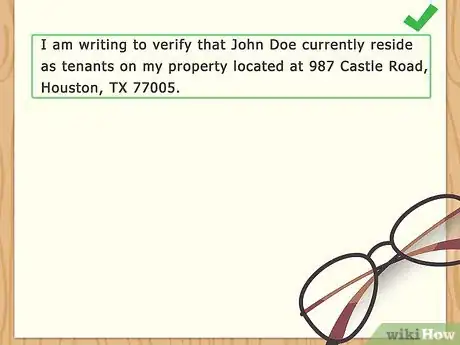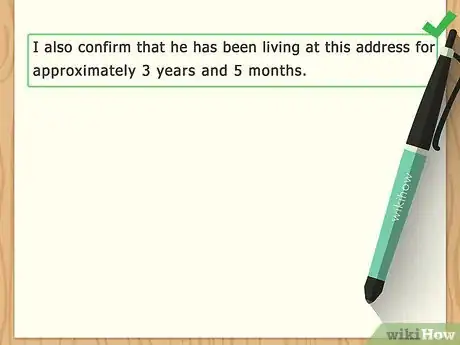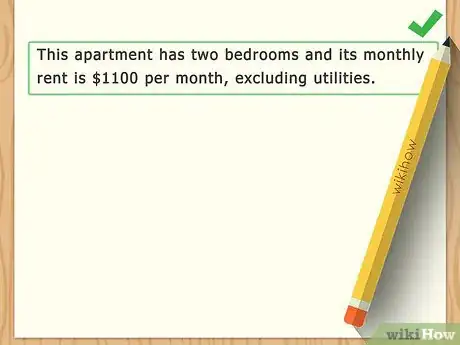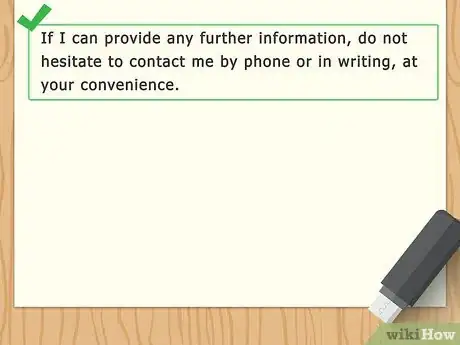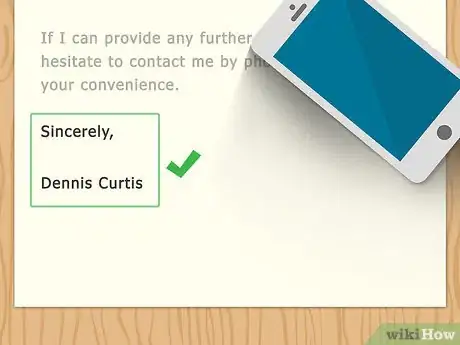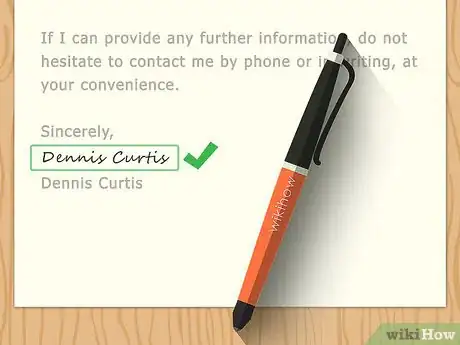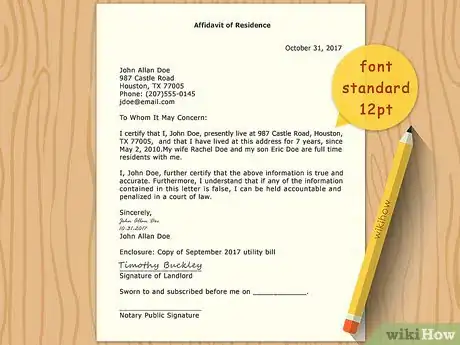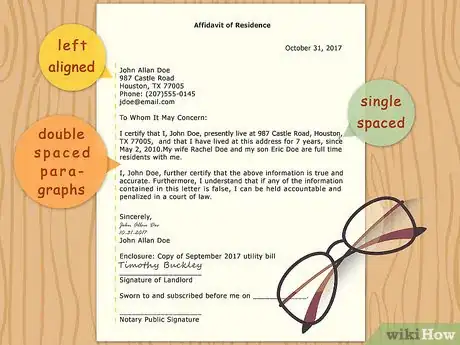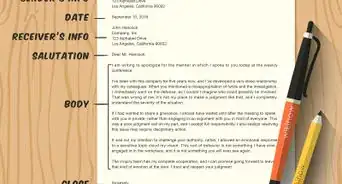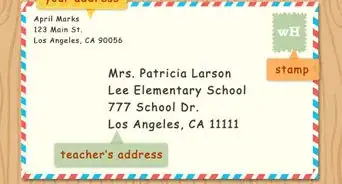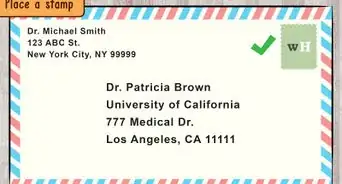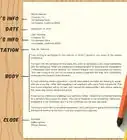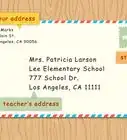This article was co-authored by Melessa Sargent. Melessa Sargent is the President of Scriptwriters Network, a non-profit organization that brings in entertainment professionals to teach the art and business of script writing for TV, features and new media. The Network serves its members by providing educational programming, developing access and opportunity through alliances with industry professionals, and furthering the cause and quality of writing in the entertainment industry. Under Melessa's leadership, SWN has won numbers awards including the Los Angeles Award from 2014 through 2021, and the Innovation & Excellence award in 2020.
There are 8 references cited in this article, which can be found at the bottom of the page.
wikiHow marks an article as reader-approved once it receives enough positive feedback. In this case, several readers have written to tell us that this article was helpful to them, earning it our reader-approved status.
This article has been viewed 2,475,381 times.
Proof of residency is often required to register for schools, visas, and state or national programs. Most places, like the public library or the Department of Motor Vehicles, only require you to show a utility bill or lease, but some agencies may ask you to provide an "Affidavit of Residency" -- a letter testifying to your residency. To write a letter for proof of residence, provide your legal name, certify your address and the length of time you've lived there, note any other residents living at that address, and type a legally binding oath about the accuracy of the information provided; you should also be prepared to have a landlord and/or notary public sign your letter prior to submission.
Steps
Sample Letters
Preparing to Write the Proof of Residence Letter
-
1Understand the requirements of the letter. The school or agency that requires such a letter may have certain demands of the affidavit. For example, the letter must disclose certain information, such as your name, address, and length of residency at the present address.
- Some will require that a landlord sign the letter.
- Some letters will require the submission of other supporting documentation. Certain agencies will ask that you attach a copy of your present lease agreement or the contract to purchase the property. More commonly, a current utility bill made out to your name would also do.
- Most organizations will demand that the affidavit be notarized before submission.
-
2Collect and copy supporting documents. Locate the appropriate documents you will need to submit along with your letter of residency. A few examples of supporting documents include:
- Lease or purchase agreements for the current residence.
- Utility bills for your current residence.
- Old tax and payroll forms that include your address information.
Advertisement -
3Discuss the affidavit with your landlord. If the agency requires the signature of your landlord on the letter, or a letter from your landlord, contact the landlord as soon as possible. If the document must be notarized, then you and the landlord both must sign in front of the notary.
-
4Make an appointment with a notary. Not all notaries require an appointment, but you should contact local notaries beforehand to make sure that your documents can be notarized in a timely manner.
Heading the Letter
-
1Create a heading for the letter. The heading should read "Affidavit of Residence." Center this at the top of the letter in a bold font. You can make the font slightly larger than the rest of the document, but only go up one size. Remember, this is a legal document, so keep everything formal.[1]
- An alternate way of labeling the letter is typing the word subject at the top followed by the words "Affidavit of Residence" or "Proof of Residence." This should be aligned along the left margin with standard font that matches the rest of the letter.
- Subject: Proof of Residence
- Re: Affidavit of Residence[2]
-
2Date the letter. All official documents should be dated. You can format the date however you wish. You can use all numeric (MM/DD/YYYY) or written out (such as "January 3, 2015"). The date should be aligned to the right side and placed at the top of the letter.
- The date should be two lines below the centered header. If you have a subject instead of a header, the date should be two lines above it.
- Make sure the date on the document matches the date you will be meeting with the notary, if the letter will be notarized.
-
3Include your contact information. At the top left, include all of your contact information. This is important in case someone needs to contact you in regard to the letter. Include the following:
- Full legal name
- Address, including street name, city, state, and zip code
- Phone number
- E-mail address[3]
- This should go under the date and header, but above the subject.
-
4Address the the company or individual. Start the letter off by addressing the person, company, or institution who requested it. Include the full title of the individual or the full name of the company.
- If you are unsure who to address the letter to, address it with: "To Whom It May Concern."[4]
Writing the Letter as a Resident
-
1Start with your legal name. Since this is a legal document, you want to include your full legal name in the document. Don't put nicknames, shortened forms of your name, or other names you go by.[5]
- Proof of residence letters generally start the following way, "I, YOUR FULL LEGAL NAME,..."
-
2Certify your address. The first thing you want to include is your entire address. This is the most important piece of information in the letter.
- I, Joe Sample, make an oath and say that I live at 123 Street Road, City, State, Zip Code.[6]
- I certify that I, Joe Sample, live at 123 Street Road, City, State, Zip Code.
-
3State the length of time you've resided at the residence. This needs to be as precise as possible. Give month, day, and year if possible. If you don't know the day, give month and year.
- I certify that I, Joe Sample, have lived at this residence for three years, beginning on month/day/year.
-
4Include any other residents. If the letter requires, include the names of the other people who reside with you. Also include how long they have lived with you if they have resided for a different length of time.
- This is important if you are verifying your child's address for a school district.
-
5Type your oath. Since this is an affidavit, you are swearing under oath that you are telling the truth.[7] By placing an oath beneath the previous statements, you are certifying that they are accurate. In the process, you make yourself liable to perjury charges if found to be lying.
- I, Joe Sample, further certify that the above information is true and accurate. I realize that should any of this information be false, I am liable for any penalties which the law provides under civil or criminal codes.
-
6Follow with a closing phrase and your name. Two single-spaced lines below the last sentence in the affidavit, type "Sincerely," "Regards," or some other closing remark. Then, three or four lines below that type out your full name as it appeared at the start of the letter.
- Make sure the legal names are the same on all other legal documents, and on the supporting documents, to avoid complications.
-
7Sign and date the letter. If you are going to sign and date the document now, you can do so in the lines between your typed name and the closing statement.
- If the document is to be notarized, do not sign and date the document until the notary can bear witness.
-
8Create a line for the notary's signature. If your letter has to be notarized, place a signature line for the notary public at the very bottom.
- Sworn to and subscribed before me, __(signature of notary)__, this __(date)__.
-
9Create a space for a landlord's signature. If the landlord is required to sign the letter, place a signature line for the landlord so they can sign it.
-
10Take the document to the notary. If you have to have the letter notarized, take it to a local notary. You can find notaries in government offices and at many mailing counters, like the local UPS store. A quick internet search will also provide a list of notaries near you.
- You will need your letter and two forms of identification.
- You may need to have your landlord present, if his or her signature is also required on the letter.
-
11Save a copy of the letter for your own records. As a legal document, make sure that you keep copies of the letter and all supporting documents that are to be submitted.
Writing the Letter if You Are the Landlord
-
1Start with the purpose of the letter. If you are the landlord, the purpose of the letter is to verify the residency of your tenants. Make sure to include the full legal name of your occupants.
- This letter is to verify that INSERT TENANT NAMES...
- I am the landlord of INSERT NAME OF COMPLEX and am writing to verify the residency of my tenant INSERT NAME.[8]
-
2Include the address. The next thing you want to include is the entire address of the property. This is the second most important piece of information in the letter.
-
3State the length of time they have resided at the residence. This needs to be as precise as possible. Give month, day, and year if possible. If you don't know the day, give month and year.
- INSERT TENANT NAMES have resided at the property from MM/DD/YYYY to MM/DD/YYYY.
- You may just have to state that they live at your property. Make sure you know if you have to provide the duration.
-
4Include the rent amount. Some proof of residence letters requires you to include the monthly rent. Find out if this is required for your letter.
- You may also need to include whether the utilities are included in the rent.
-
5Offer to answer follow up questions. In the last paragraph, state that you are willing to answer further questions. You can include your phone number or e-mail address again so the person reading the letter will know how to contact you.[11]
-
6Follow with a closing phrase and your name. Place two single-spaced lines below the last sentence in the affidavit. Type "Sincerely," "Regards," or some other closing remark. Then, three or four lines below that type out your full name. Don't put nicknames, shortened forms of your name, or other names you go by.
-
7Sign the letter. Print out the letter and sign it.
Finishing Your Document
-
1Type the letter. Type the letter in standard format. This means the letter should be in size 12 font. The font should be a standard, formal font, such as Times New Roman, Arial, or similar. Use 1-inch margins.
- Don't use unnecessary bold, italics, or underlining.
-
2Use business letter format. Business letter format is a block format. The letter should be single-spaced, with a space between each new paragraph. Put two spaces between the end of the last paragraph and the closing.
- Don't indent your paragraphs.
-
3Proofread your letter. This is a legal document, so make sure the language is clear and there are not grammatical errors or typos. Use a spellchecker, and have someone else read over it.
Community Q&A
-
QuestionHow do I go about getting a letter for proof of address?
 Community AnswerYou may use a utility bill or other piece of official mail that proves your address.
Community AnswerYou may use a utility bill or other piece of official mail that proves your address.
References
- ↑ https://www.rocketlawyer.com/document/affidavit-of-residence.rl
- ↑ http://aspenk12.net/cms/lib8/CO01900693/Centricity/Domain/234/FORM%20LETTER%20FOR%20PROOF%20OF%20RESIDENCY.pdf
- ↑ http://www.bestsampleresume.com/letters/landlord-reference-letter.html
- ↑ http://howtowritealetter.net/letter-of-verification.html
- ↑ http://www.free-legal-document.com/affidavit-of-residence.html
- ↑ http://www.free-legal-document.com/affidavit-of-residence.html
- ↑ http://www.free-legal-document.com/affidavit-of-residence.html
- ↑ http://www.freelettersamples.com/proofofresidency2.htm
- ↑ http://www.careerride.com/view.aspx?id=12161M
About This Article
To write a letter for proof of residence, type "Affidavit of Residence" at the top of a blank page and center the text. Beneath that, write the date, your name, address, phone number, and email. Include your full name, current address, how long you've lived there, and the names of anyone who lives with you in the body of the letter. Type a legally binding oath about the accuracy of the information, then sign the letter and get it notarized before you submit it. If you want to learn the differences between writing a letter as a resident versus writing one as a landlord, keep reading!
